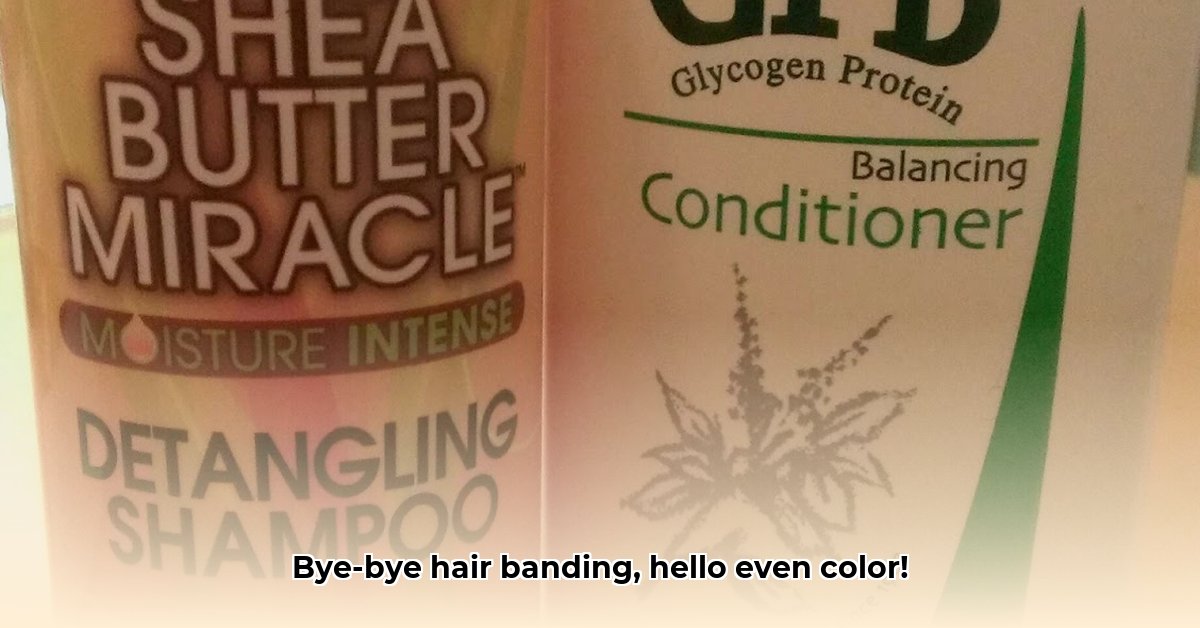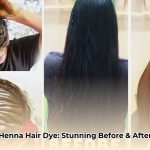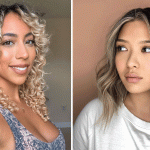Ever notice those weird, uneven streaks in your hair after coloring? Or maybe you’re trying to grow your natural hair longer without using heat, and you’ve heard about this “banding” technique. This guide is all about understanding and tackling hair banding – both the kind that happens when you dye your hair and the kind that helps you stretch it out naturally. We’ll show you exactly what causes those annoying color bands, how to prevent them, and how to use banding to get gorgeous, healthy hair, whether you’re aiming for vibrant color or beautiful, longer curls. We’ll even compare and contrast both types of banding, giving you tons of tips and tricks to get the best results and keep your hair looking fabulous. For more on choosing the right color, check out this guide on hair color for brown skin.
Hair Banding: Causes, Prevention, and Solutions
Let’s dive deep into hair banding – that frustrating unevenness that can appear when you color your hair or stretch your natural curls. Whether it’s those annoying streaks in your dye job or patchy results from trying to stretch your hair without heat, we’re here to help you get rid of it. This comprehensive section addresses both types of hair banding and provides expert tips for prevention, remediation, and achieving the hair goals you desire.
Hair Color Banding: Understanding the Unevenness
Uneven hair color after dyeing is a common problem, often resulting in the appearance of distinct lines. Color banding occurs when sections of hair absorb dye differently, leading to visible color variations. Several factors can contribute to this, impacting your overall hair appearance and potentially affecting hair health.
- Uneven Application: Inconsistent application techniques can cause certain areas to receive more dye than others.
- Varying Porosity: Hair porosity, or the hair’s ability to absorb moisture, can vary across different sections. Highly porous hair absorbs color quickly, while hair with low porosity may resist color.
- Overlapping Color: Applying dye over previously colored hair can lead to banding if the new color doesn’t blend seamlessly with the old.
- Infrequent Touch-Ups: Allowing too much time between coloring sessions can result in noticeable root regrowth and color fading, creating a band of demarcation.
Think of your hair like a canvas with varying textures. Some areas might be smoother and more receptive to color, while others may be rougher and less absorbent. The longer you wait between dye jobs, the more pronounced these differences become, increasing the likelihood of banding.
Proactive Measures: Preventing Hair Color Banding
Preventing hair color banding requires a multi-faceted approach that focuses on preparation, application, and maintenance. By implementing the following strategies, you can minimize the risk of uneven color and achieve a more consistent, professional-looking result.
- Clarify and Prep: Before dyeing your hair, use a clarifying shampoo to remove any product buildup, excess oils, or mineral deposits that could interfere with color absorption. Follow the shampoo with a moisturizing, color-safe conditioner to ensure your hair is properly hydrated and protected.
- Sectioning and Saturation: Divide your hair into small, manageable sections using clips or hair ties. Apply the dye evenly and thoroughly to each section, ensuring that every strand is fully saturated with product. Pay close attention to the roots, as this area is most prone to banding due to regrowth. A bottle applicator or a tint brush can help with precise application.
- Strategic Timing: Adhere to the recommended processing time specified on the dye packaging. Avoid exceeding this time, as over-processing can lead to damage and uneven color. To minimize the risk of banding, process the roots first, followed by the mid-lengths and ends.
- Regular Root Touch-Ups: Schedule regular root touch-up appointments every 4-6 weeks to maintain consistent color and prevent noticeable regrowth. During these touch-ups, focus on applying dye only to the new growth, avoiding overlap with previously colored hair.
- Professional Consultation: If you’re dealing with significant color banding or attempting a major color transformation, consult a professional colorist. They have the expertise and experience to assess your hair’s condition, formulate the correct color, and apply it evenly for optimal results.
Addressing Existing Color Banding: Effective Solutions
Despite your best efforts, hair color banding can still occur. If you find yourself with uneven color, don’t despair! Several effective solutions can help correct the banding and restore a more balanced, harmonious look.
| Method | Advantages | Disadvantages |
|---|---|---|
| Professional Color Correction | Provides the most reliable and comprehensive results; addresses the underlying causes of banding; minimizes the risk of further damage. | More expensive than DIY solutions; requires a salon appointment and may involve multiple sessions. |
| At-Home Toners/Glazes | Can help neutralize unwanted tones, blend minor banding, and add shine; more affordable than professional correction. | May not completely correct severe banding; results are temporary and require frequent reapplication; potential for misuse and further damage if not used correctly. |
| Color-Depositing Conditioners/Masks | Offer temporary color correction and conditioning in one step; can refresh faded color and mask subtle banding; non-damaging and easy to use. | Results are subtle and short-lived; may not be effective on darker or more resistant banding; potential for color transfer to clothing or bedding. |
Hair Banding for Natural Hair Stretching: Heat-Free Elongation
Hair banding is a gentle technique used to stretch natural hair without heat. It involves sectioning the hair and securing each section with soft bands or hair ties, effectively elongating the curls and reducing shrinkage. This method is ideal for those who want to preserve their curl pattern while adding length and volume.
The Art of No-Heat Stretching: How to Band Your Natural Hair
Banding natural hair requires patience and precision to avoid damage and achieve optimal results. Here’s a step-by-step guide to help you master the technique:
- Prepare Your Hair: Start with freshly washed and conditioned hair. Apply a leave-in conditioner and a light oil or serum to moisturize and protect your strands. Slightly damp hair is ideal for banding, as it allows for maximum stretch and definition.
- Sectioning: Divide your hair into small, even sections using clips or hair ties. The number of sections will depend on your hair’s length, thickness, and desired level of stretch. For tighter curls and more significant elongation, create smaller sections.
- Banding: Take a soft, snag-free hair tie or elastic band and gently wrap it around the base of one section. Continue wrapping the band down the length of the section, spacing each wrap about an inch apart. Avoid wrapping the bands too tightly, as this can cause breakage and damage.
- Repeat: Repeat the banding process for each section of your hair until all sections are secured.
- Drying: Allow your hair to air dry completely. This may take several hours or even overnight, depending on your hair’s thickness and length. To speed up the drying process, you can use a hooded dryer or a diffuser on a low heat setting.
- Removal: Once your hair is completely dry, carefully remove the bands, starting from the bottom and working your way up. Gently unravel each band, avoiding any pulling or tugging that could cause breakage.
- Style and Enjoy: Once all the bands are removed, style your hair as desired. You can wear it in a stretched-out wash-and-go, a braid-out, a twist-out, or any other style that showcases your elongated curls.
Banding vs. Heat Styling: Weighing the Pros and Cons
| Method | Advantages | Disadvantages |
|---|---|---|
| Hair Banding | Heat-free, minimizes damage to your hair, preserves curl pattern, promotes length retention, ideal for those with delicate or damaged hair, versatile styling options. | Time-consuming, requires patience, potential for breakage if bands are too tight or removed improperly, results may vary depending on hair type and technique. |
| Heat Styling | Quick and efficient, provides immediate results, offers a wide range of styling options, can create sleek, straight styles or defined curls, suitable for various hair types and lengths. | Can cause heat damage, lead to dryness and breakage, alter curl pattern, require the use of heat protectants, may not be suitable for those with delicate or damaged hair. |
Both hair coloring and stretching require careful attention to detail to maintain hair health and prevent damage. By following the right steps and using appropriate techniques, you can minimize the risk of unevenness, breakage, and other common hair problems. Remember, patience and consistency are key to achieving the beautiful, healthy hair you desire! Did you know that consistent banding techniques can promote healthier hair growth and increased length retention over time?
Correcting Hair Color Banding After At-Home Dye
Key Takeaways:
- Uneven hair color, or banding, happens due to inconsistent dye application, improper product use, and varying hair porosity, directly impacting hair health.
- Prevention focuses on prep work, precise application, and choosing the right
- Wellness Fair Ideas for Work to Boost Employee Wellbeing - December 15, 2025
- Affordable Employee Wellness Fair Ideas for Any Budget - December 14, 2025
- Employee Wellness Programs Strategically Benefit Employee Health And Retention - December 13, 2025
















